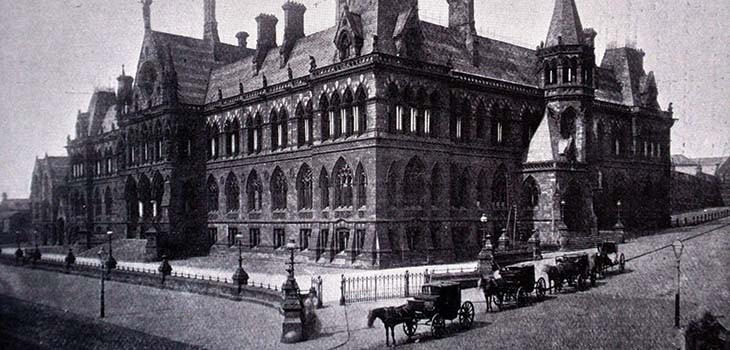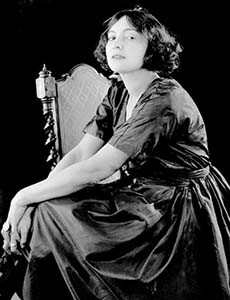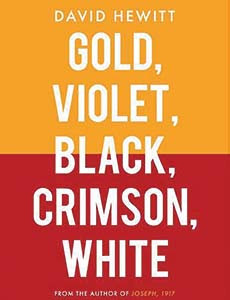*/

I have spent the last five years looking at Five Nights. That old film might now be considered lost, but there was a time when it caused quite a kerfuffle in picture houses – and courts – across the land. Which is ironic, because it was a silent film.
What remains of Five Nights can be found in Preston where the film was shown first, even if it would be shown there only once. It was also where the kerfuffle was first raised.
I had visited the county archives in the town before when researching the medieval church courts and how they dealt with defamation, and later, for my book Joseph, 1917 (about a tribunal that sent a man to fight, even though he had already agreed to go).
But the documents I discovered this time were of a very different kind. There was, in fact, a trove of them. I found lawyers’ letters and memoranda. There was a Statement of Claim, some Answers to Interrogatories, and a bill of costs. And there was even a detailed synopsis of Five Nights prepared by someone who had actually seen the film.
The synopsis was a real find. Reading it alongside newspaper reports of the time and publicity materials from the archive, I was able to start putting Five Nights back together.
The film told the story of a louche young artist with too much time on his hands, and I now know that it showed him sailing to Alaska, seducing a young Chinese woman there, shooting a Chinese man in San Francisco, and having his own cousin disrobe in front of him. But it also showed him as the father of an illegitimate child – and that, above all, was why the kerfuffle was raised.
Five Nights was shown in Manchester, Liverpool, Bristol, Glasgow and Edinburgh without anyone there batting an eyelid. But in Bradford, Bath, Dublin and Brighton, it was banned outright.
In Birmingham, a committee of clergymen called it ‘immoral and depraving’. And in Wallasey, the mayor said it was ‘an extremely immoral and suggestive picture’. ‘I would not have liked to have taken my wife or daughter to see such a thing,’ he went on, ‘and if any female had been in the theatre I would have walked out.’
Nowhere, however, was the controversy greater than in Preston. It was at the King’s Palace theatre in the town that Five Nights was shown, at the very end of August 1915, on a baking-hot Monday afternoon.
Margaret Buck was in the audience. Margaret claimed to visit picture houses four or five times a week, and she called Five Nights ‘a very indecent and disgraceful picture’. ‘I have seven children and am not easily shocked and like a bit of fun,’ she said. ‘But if I had known the sort of picture it was, I would not have gone to see it on any account.’
Frederick Daggers also had seven children. He had seen Five Nights while recovering from injuries sustained on the Western Front, and he called it ‘objectionable, suggestive and indecent’.
And May Fazackerley said it was ‘a very disgraceful picture for any decent people to see’. Her proof of evidence bears a feint, handwritten note. ‘A bit deaf,’ the note says, ‘not a regular picture-goer.’
May’s proof of evidence, and those of Margaret, Frederick and several other people, were prepared in the course of civil proceedings involving the Chief Constable of Preston. The most momentous contribution to the debate would come from him.
James Watson had a reputation as a strict disciplinarian. He too was part of the audience that hot afternoon, and he didn’t like what he saw. After the house lights had come up again, he said Five Nights was ‘offensive and objectionable’. Mr Watson’s words soon came to the attention of Walter Stott and Fred White, the men who rented the film to the King’s Palace and across much of the north of England. They had paid a huge fee for that privilege, and now, they alleged that the Chief Constable had defamed them. Their Statement of Claim demanded damages of up to £5,000 (a sum worth 60 times as much today).
The trial took place in February 1916, at the old Assize court in Manchester. The transcript of the trial reveals that on the first morning, after counsel brought up the shenanigans between the artist and his model, the judge was quick to intervene. ‘If these items are to be gone into,’ he said, ‘I shall ask all ladies to please leave the court.’ The proceedings lasted for two days, but the jury had been out barely an hour when its foreman rose to his feet: the claim was dismissed. The Chief Constable’s words had been fair comment – nothing less, but certainly nothing more.
But of all the things I found in Preston, it is the most inscrutable thing that has stayed with me longest. Barely two inches square and made of pink celluloid grown brittle over the years, it contains two frames from the film itself. What those frames show is a man and a woman sitting side-by-side, each with their arms around the other, both engaged in the tenderest kiss. And after all the proofs of evidence and the Answers to Interrogatories, after the five years and the Five Nights, that’s surely something to raise a kerfuffle about.



I have spent the last five years looking at Five Nights. That old film might now be considered lost, but there was a time when it caused quite a kerfuffle in picture houses – and courts – across the land. Which is ironic, because it was a silent film.
What remains of Five Nights can be found in Preston where the film was shown first, even if it would be shown there only once. It was also where the kerfuffle was first raised.
I had visited the county archives in the town before when researching the medieval church courts and how they dealt with defamation, and later, for my book Joseph, 1917 (about a tribunal that sent a man to fight, even though he had already agreed to go).
But the documents I discovered this time were of a very different kind. There was, in fact, a trove of them. I found lawyers’ letters and memoranda. There was a Statement of Claim, some Answers to Interrogatories, and a bill of costs. And there was even a detailed synopsis of Five Nights prepared by someone who had actually seen the film.
The synopsis was a real find. Reading it alongside newspaper reports of the time and publicity materials from the archive, I was able to start putting Five Nights back together.
The film told the story of a louche young artist with too much time on his hands, and I now know that it showed him sailing to Alaska, seducing a young Chinese woman there, shooting a Chinese man in San Francisco, and having his own cousin disrobe in front of him. But it also showed him as the father of an illegitimate child – and that, above all, was why the kerfuffle was raised.
Five Nights was shown in Manchester, Liverpool, Bristol, Glasgow and Edinburgh without anyone there batting an eyelid. But in Bradford, Bath, Dublin and Brighton, it was banned outright.
In Birmingham, a committee of clergymen called it ‘immoral and depraving’. And in Wallasey, the mayor said it was ‘an extremely immoral and suggestive picture’. ‘I would not have liked to have taken my wife or daughter to see such a thing,’ he went on, ‘and if any female had been in the theatre I would have walked out.’
Nowhere, however, was the controversy greater than in Preston. It was at the King’s Palace theatre in the town that Five Nights was shown, at the very end of August 1915, on a baking-hot Monday afternoon.
Margaret Buck was in the audience. Margaret claimed to visit picture houses four or five times a week, and she called Five Nights ‘a very indecent and disgraceful picture’. ‘I have seven children and am not easily shocked and like a bit of fun,’ she said. ‘But if I had known the sort of picture it was, I would not have gone to see it on any account.’
Frederick Daggers also had seven children. He had seen Five Nights while recovering from injuries sustained on the Western Front, and he called it ‘objectionable, suggestive and indecent’.
And May Fazackerley said it was ‘a very disgraceful picture for any decent people to see’. Her proof of evidence bears a feint, handwritten note. ‘A bit deaf,’ the note says, ‘not a regular picture-goer.’
May’s proof of evidence, and those of Margaret, Frederick and several other people, were prepared in the course of civil proceedings involving the Chief Constable of Preston. The most momentous contribution to the debate would come from him.
James Watson had a reputation as a strict disciplinarian. He too was part of the audience that hot afternoon, and he didn’t like what he saw. After the house lights had come up again, he said Five Nights was ‘offensive and objectionable’. Mr Watson’s words soon came to the attention of Walter Stott and Fred White, the men who rented the film to the King’s Palace and across much of the north of England. They had paid a huge fee for that privilege, and now, they alleged that the Chief Constable had defamed them. Their Statement of Claim demanded damages of up to £5,000 (a sum worth 60 times as much today).
The trial took place in February 1916, at the old Assize court in Manchester. The transcript of the trial reveals that on the first morning, after counsel brought up the shenanigans between the artist and his model, the judge was quick to intervene. ‘If these items are to be gone into,’ he said, ‘I shall ask all ladies to please leave the court.’ The proceedings lasted for two days, but the jury had been out barely an hour when its foreman rose to his feet: the claim was dismissed. The Chief Constable’s words had been fair comment – nothing less, but certainly nothing more.
But of all the things I found in Preston, it is the most inscrutable thing that has stayed with me longest. Barely two inches square and made of pink celluloid grown brittle over the years, it contains two frames from the film itself. What those frames show is a man and a woman sitting side-by-side, each with their arms around the other, both engaged in the tenderest kiss. And after all the proofs of evidence and the Answers to Interrogatories, after the five years and the Five Nights, that’s surely something to raise a kerfuffle about.




Chair of the Bar reflects on 2025
Q&A with criminal barrister Nick Murphy, who moved to New Park Court Chambers on the North Eastern Circuit in search of a better work-life balance
Revolt Cycling in Holborn, London’s first sustainable fitness studio, invites barristers to join the revolution – turning pedal power into clean energy
Rachel Davenport, Co-founder and Director at AlphaBiolabs, reflects on how the company’s Giving Back ethos continues to make a difference to communities across the UK
By Marie Law, Director of Toxicology at AlphaBiolabs
AlphaBiolabs has made a £500 donation to Sean’s Place, a men’s mental health charity based in Sefton, as part of its ongoing Giving Back initiative
Professor Dominic Regan and Seán Jones KC present their best buys for this holiday season
Little has changed since Burns v Burns . Cohabiting couples deserve better than to be left on the blasted heath with the existing witch’s brew for another four decades, argues Christopher Stirling
Six months of court observation at the Old Bailey: APPEAL’s Dr Nisha Waller and Tehreem Sultan report their findings on prosecution practices under joint enterprise
Despite its prevalence, autism spectrum disorder remains poorly understood in the criminal justice system. Does Alex Henry’s joint enterprise conviction expose the need to audit prisons? asks Dr Felicity Gerry KC
With automation now deeply embedded in the Department for Work Pensions, Alexander McColl and Alexa Thompson review what we know, what we don’t and avenues for legal challenge